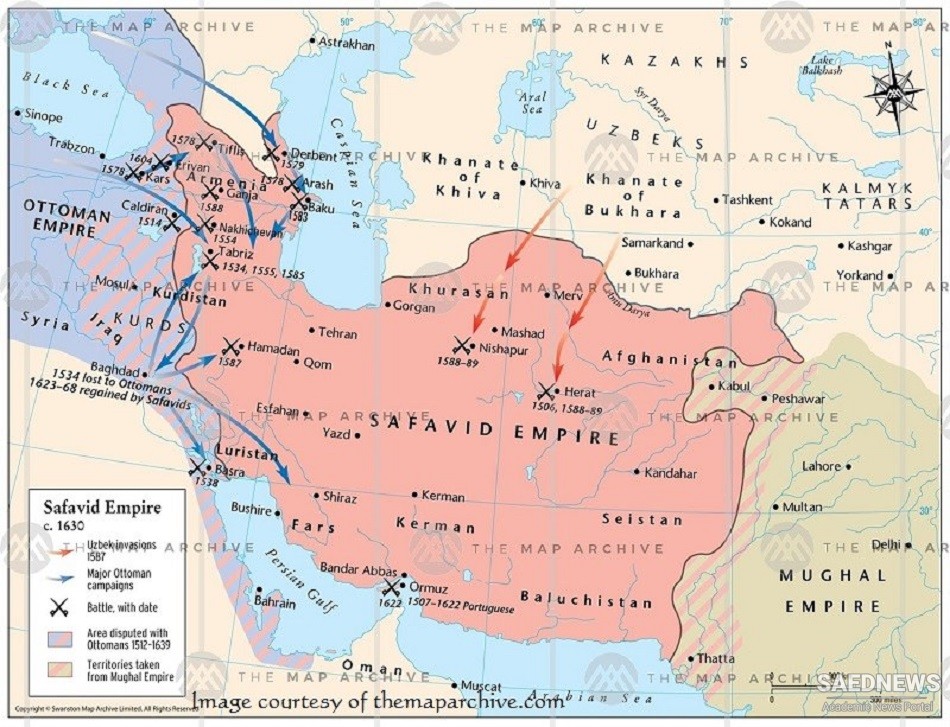At all events they did not mar the good relations the shah enjoyed with successive rulers of Bukhara, 'Abd al-'Aziz Khan and, after 1091/1680, the latter's brother, Subhan Qull Khan. In 1685 ambassadors were exchanged in an attempt to settle existing differences diplomatically. Another neighbouring people from the north, the Kalmucks, a Western Mongolian race from the Ust-Urt region between the Caspian and Aral Seas, had already attracted the attention of the government in Isfahan in the time of 'Abbas II, at first because of an incursion into the province of Astarabad and later when a legation was sent to the Persian capital. The Kalmucks, clearly under the impression that Persia was militarily weak, made further attacks during Sulaiman's reign. From time to time they also sent ambassadors to the Persian court again. It is, however, unlikely that they were held in any great esteem there.
In contrast to earlier periods there were no difficulties of note with the Georgian lands. In Kakhetia the previously mentioned governor Shahnavaz had been succeeded in 1664 by his son Archil Khan and in 1675, for a short period, by Herakleios I (Erekle), a grandson of the famous Theimuraz. All subsequent administrators were Persians. In Kartlia, on the other hand, a native dynasty, the Mukhranids, remained under Persian suzerainty.
Because of the pomp and circumstance associated with the reception of foreign legations, detailed accounts of the diplomatic activity of the period are given both by Persian sources and by foreign travellers. European missions figure prominently, such as those from Sweden, Russia and France. Their object was usually the development of trade relations, Persian silk in particular being in great demand.


 Aggressive Centralization Policy
Aggressive Centralization Policy














































